When you first take a camera in hand, this black box with a lens on it can seem to be a glaze inducing riot of numbers, symbology, and menu options. 2.8, 4, 5.6, plus or minus 2 EV……..if you’re not numerically inclined, there is, to say the least, potential for confusion. The shutter speed dial has more logic, right? Twice or half, depending on which way you turn it. Initial forays in making f-stops and shutter speeds work together like a seamless duo, to produce dependably predictable results, can induce one to look shiftily around the room, making sure nobody is watching, and quietly dialing the camera over to “P” mode. Just go and shoot. Let the camera do the math.
But that’s like not voting on election day, and then complaining about the result. The camera’s brain can average things out, at least most of the time, reasonably well. But what it can’t do is interpret the numbers and see potential for those numbers, working together, to produce a different look, or looks. It’s like asking an adding machine to write an essay.
The three pictures below were all shot in the same hallway. The location is the same, but the math of each picture is different.
I saw a wonderful splash of light in the hospital hallway, and simply asked a nurse to check her charts in that spot. I dropped my single servo, single point of focus on her face, and shot the above combination, purposely limiting my DOF. I got lucky with the crossing wheelchair in the back.
But I loved the graphics of the buildings out the window, too. So I drug out a flash, and Cali held it for me, hidden in the turn of the hall, and I triggered it with an on camera commander.
Shorter lens, flash pop, big f-stop. Stayed within the bounds of “normal sync” as you can see, at 1/250th. This combo makes the outside saturated and discernible, with a blue sky, which fortuitously matches the surgical scrubs. This type of shot in NYC is mightily dependent on time of day, as in the canyons of Manhattan, strong sunlight only hits the faces of the north-south avenues for a short period of time, as it travels through the sky.
Still wasn’t done with the hallway. I put the camera on a tripod, and shot this.
This f-stop, shutter speed combo now gives me a blown out background, and the lack of flash makes for silhouettes, while the slow shutter lets the subjects blur through the frame, just a bit. That’s Cali, by the way, our first assistant, on the gurney. He’s being whisked into the OR for much needed repairs:-)
Good picture editors I have worked for over the years have often used the phrase, “peel the onion,” in reference to approaching a story. In other words, keep working at it, peeling back the layers of a situation, keep drilling, keep going to find the core, something pictorially meaningful.
The same thought can be applied to locations. Don’t shoot one look and move on. Try different lenses and looks of the light. Move around. (Per Jay Maisel: “Move yer ass!”) Parse out the location into different pictures. The art director will love you for it. The client used all three of the above pix, one for the back cover of the book project, and the others as two page spreads inside.
If I can get three different looks out of one location, and the client likes and uses them all, that’s a good day in the field.
More tk…..


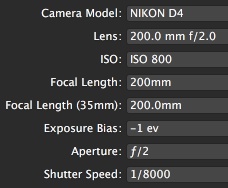


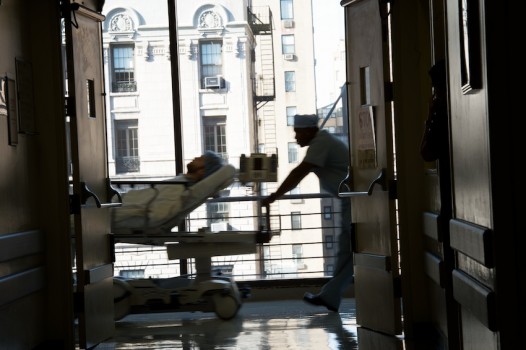
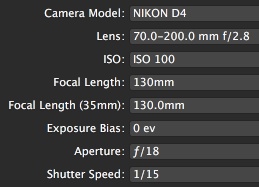

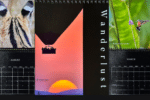

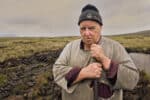





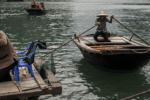



Great images and a great, instructional, post, Joe. Is the last image tilted slightly for effect?
Great post.
Quick question: for the second shot, why did you use f14 & -1 ev as opposed to just using f16 of f18?
Thanks
Abe
Thanks Joe, Very inspirational and three great images. Love your blog and your constant source of inspiration. Thanks for the specs on the images, too. Gonna go try something like this right now. Chris
As always Joe, thank you for sharing!
Surying your location, always look around. Useful photography tip!
F-Stop and Shutter Speed: A powerful combination – As is your personal demonstrations of a brilliant mind – technical skill – and hard work!
Thank you for sharing.
As always Joe – informative, inspirational, interesting. Thank you.
You can learn more from these three photos than you can get from entire books on photography. Hope Cali recovers soon. 🙂
I noticed that you also introduced a third variable into the equation, ISO. Can you comment on the impact of the change in ISO between the images. I’m struggling understanding the impact of the high ISO in your first image which seems countered by the high shutter speed. The opposite being in your third image of the low ISO and also slow shutter speed. Thanks!
Joe , F STOP&SHUTTER SPEED They taught me this 51yrs ago amazeing isnt it. Regards Walt.
Hi Joe,
What type of flash did you use in the second picture? Is it zoomed? Softbox or without softbox? In case you used a softbox, what kind?
Have a nice day!
Regards,
Sebastian
Hi Sebastian…just a raw SB 910 speed light, zoomed to 200mm……best, Joe
@Abe
Good point about the -1 ev. I’d bet that it’s been done to increase the effect of the flash. I think Joe’s probably diallied in +1 (more or less) ev on the flash (easily done from the camera with the on-board flash triggering in commander mode). So the flash illuminates the subject correctly and more brightly than the rest of the frame and thereby draws the viewer’s eye to the subject.
Am I any where near right, Joe?
Regards, Ian
PS. How do I say that your creativity never ceases to impress, without sounding sycophantic?
Love the venetian blind effect on the nurse!
Beautiful images that brilliantly highlight multiple ways to use the same window. Not sure I get the title of this post though. While it’s true that the f-stop and shutter speed variations played a key role, EVERYTHING else was critically different as well… focal length, ISO, flash, composition, subject, heck… even three different lenses.
Seems like this was an exercise in thinking outside the box, and knowing how to make your equipment work for you… well beyond f-stops and shutter speeds… What am I missing?
Hi Sean…missing nothing, really. You’re absolutely right, there are a lot of things at play, as always. But to me, the most palpable “changes” visually in the location derive from the choice of f-stop, and the corollary feel of the depth of field. And of course, f-stop influences choice of shutter speed. But you’re right, lots of other stuff going on in the background, including, most simply, the recognition factor that this hallway had a lot to offer, visually. Joe
Hi Ian…appreciate the kind words. In the desperate scramble of location work, sometimes creativity derives from sheer panic!!! :-))) There are a couple minus 1 EV readouts in the blog. With the nurse up front, in the splash of light, the minus one is correlating to the available light exp. on her. Needed to push down my EV to get good saturation on her. In the other instance of minus one, it’s actually just an oversight on my part. The camera is set up on manual, and the flash comp is local to the flash and set up in the flash. I believe the flash was running full power, on manual, to achieve f14. The minus one becomes irrelevant in the camera, as I am using the camera in manual mode. I was moving fast and pushed the whole deal into manual control for both flash exposure and ambient exposure. Best, Joe
Plain and simple: you are DaVinci with a camera.
Awesome images and I love your detailed info. Looking forward to hearing you at Skips Summer School in a few weeks!
Just a quick note Joe; how humbling it is to read your blog and see the amount of time and attention you give to comments of your readers. You are a remarkable man not just photog God. Combine raw talent with giving back and there is no wonder of your success. I hope to see you in Vegas at PhotoShop World in Sept.
Fantastic post btw.
-Chad J.
Hi Joe,
I have a combination of Canon 5D Mark 3 with 24-70 2.8 LII lens and a Canon 430 EX2 flash gun…. Is the flash good enough for bouncing light during wedding assignments.
Regards,
Dan, India